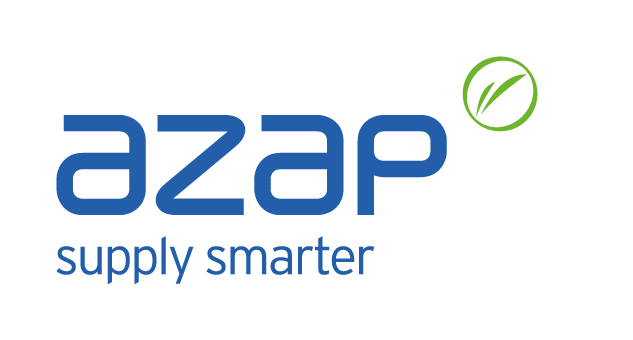On October 16, Dominique Bourgoin, Dr. in Artificial Intelligence and Founder of AZAP, participated in a round table organized in partnership with Supply Chain Village on the theme of “Can AI improve forecasts? “. According to her, AI will go even further than statistical methods to improve forecasts by better and automatically exploiting exogenous data. Until this is integrated as standard in the solutions, this still represents a high cost and energy / time to invest that must be weighed against the challenges of the business. Summary of discussions with Jean-Philippe Guillaume, host of the show.
Jean-Philippe Guillaume: We no longer present AZAP, but can you briefly summarize what your company does?
Dominique Bourgoin: AZAP was created in 2000 to optimize Supply Chains, whether simple or complex. Our offer is based on 3 integrated pillars:
- a software platform,
- high added value services,
- and expertise acquired over more than 20 years with clients.
For customers, this translates into:
- cost optimization,
- an improvement in their quality of service
- and a contribution to their growth.
J-P.G. : What can we expect from a forecasting software package? What reliability?
D.B .: The role of a forecasting package is to illuminate the future. This is to help predict average volumes within a min-max range, with some probability and reliability. Depending on the wishes of our clients, it will be part of a process that can range from very collaborative to fully automatic.
But the reliability rate varies greatly depending on the company, the type of products, the processes, the animations around the products, the number of new products and the way of calculating the reliability.
Two examples:
Fresh yoghurt-type products: reliability at one month: 90%
Construction, heating, sanitary products, etc.: 75%
J-P.G. : What are the differences between forecasts of sales, demand and supplies?
D.B .: The goal is to strive for the best knowledge of customer demand, but what is most readily available are the sales histories and the breakdowns that the software helps to quantify. Basically, we make forecasts to make the best decisions. For example, we need reliable forecasts to plan a supply at optimized costs and service rates. Depending on the decisions to be made, one must define the forecast adapted to his business and ensure that the chosen software and its settings allow it. As for the procurement process, it exploits sales and demand forecasting and uses other complementary tools, in particular anything that optimizes costs, and especially purchasing costs.
J-P.G. : How software integrates exogenous data (weather, influence of social networks, unforeseen event, etc.)
D.B .: Internal data (eg: e-commerce traffic) can be retrieved by interfacing with the company’s solutions. For exogenous data (eg monthly temperatures, epidemic incidence rate, etc.), AZAP uses APIs (programming interfaces) provided by these specialized sites. Very often histories – provided they are long enough – carry very well the information that one seeks to model and project into the future. For example, the seasonality of a product (ice cream, soup, etc.) emerges from history. The weather plays an obvious role, but very often at the margin in relation to the decisions to be made. In this case, we remain in a classic approach because we have the history. In cases where the history does not exist (new products) or is too short, we need additional explanations, exogenous information because the analysis of the time series of sales (or demand) is not sufficient. . We must therefore flesh out the approach with advanced algorithms using AI. One of the most effective ways to be responsive and quickly adapt to changes is to set up a weekly S&OP. Bringing together sales / marketing and the Supply Chain more often to discuss short-term needs is an effective response. This process complements the medium term / long term S&OP process.
J-P.G. : How did forecasters and Supply managers experience the Covid crisis in terms of forecasts and stocks? And what answers have the tools been able to provide them: recalculation of forecasts on a finer mesh or on certain families of products? More frequent S&OP?
D.B .: You have to adapt and constantly reinvent yourself based on new assumptions. Our clients had two types of concerns at the start of the crisis: managing short-term operations and preparing / planning for the recovery. Our clients also had to understand and anticipate the impacts of rapidly changing contexts (restaurants closed, schools closed, etc.) and:
- make scenarios and hypotheses to make the best decisions (demand forecasts);
- adapt their Supply Chain, by quickly implementing the decisions taken (typically, optimizing stocks to meet changes in demand forecasts).
In this context, tools like AZAP allow:
- analyze your data easily and frequently
- to make hypothesis-based scenarios
- and change its operating mode in a few clicks.
One of the most effective methods of being responsive and adapting quickly to changes is indeed to set up a sort of weekly S&OP. Bringing together sales / marketing and the Supply Chain more often to discuss short-term needs is an effective response. This process complements the medium term / long term S&OP process. It is all the more important at this time to prepare for highlights such as back to school or soon Christmas.
J-P. G .: Does artificial intelligence represent a new approach to forecasting or does it complement existing tools?
D.B .: AI complements traditional technologies, but not systematically. For example, in AZAP, AI complements traditional statistical methods but this comes at a cost, which must be implemented:
- Setting up a simple forecasting project takes 10 to 20 working days overall
- An AI approach alone most often takes between 30 and 50 working days, with a strong involvement of people in the business in addition to our Data Scientists
Not all companies have the stakes of this investment. It is therefore necessary to think carefully before starting. The efforts made must bring real profitability in relation to the decisions to be taken.
J-P. G .: Are “traditional” publishers considering integrating Artificial Intelligence into their tools?
D.B .: This has been the case for a long time at AZAP! We have been integrating AI technologies for at least 10 years because our R&D teams fell into it very small. For example, we use this to:
- Carry out automatic classification of products in forecasts,
- Helping to work by exception for supply.
AZAP integrates different AI algorithms into its core that can be exploited on demand according to the functional needs of our customers. This is where we make the difference:
- Thanks to our large number of clients who have enabled us to capitalize on concrete cases,
- And our ability to integrate solutions on our own.

